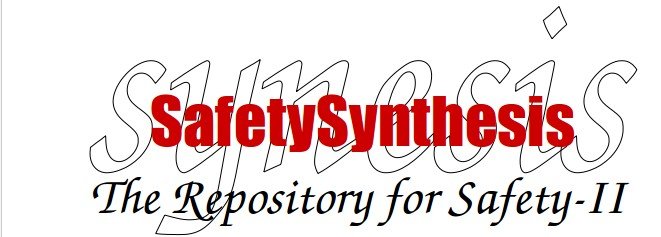(c) Erik Hollnagel, 2020
Being safe or Feeling safe?
To Be Safe
Accidents are usually explained by referring to a model of how causes lead to effects. The Domino model from 1931 used the analogy of a row of domino pieces that fell one after the other. And in the 1980s, the Swiss cheese model explained accidents as combinations of active failures (or unsafe acts) and latent conditions (hazards).
All accident models share the unspoken assumption that outcomes can be understood in terms of cause-effect relations. This causality credo can be expressed as follows:
-
An accident is an effect, and therefore has a preceding cause. There is furthermore a value symmetry (or congruence) between causes and effects, which means that an accident happens because something has failed or malfunctioned: negative effects are due to negative causes.
-
The causes of an accident can be found if only enough evidence is collected (and if enough time and effort are spent to analyse the evidence). Once the causes have been found, they can be eliminated, encapsulated, or otherwise neutralised.
-
Since all accidents have causes, and since all causes can be found, it follows that all accidents can be prevented. This is the vision of zero accidents or zero harm that many companies find attractive.
According to the zero accident vision, the goal of safety management is to ensure that nothing goes wrong, whether counted as accidents, incidents, loss time injuries, etc. We will therefore be safe if we can ensure that nothing goes wrong.
To Feel Safe
Accidents are not only a hindrance to purposive human activity, but are also unexpected, even when they are imaginable. Because accidents take us by surprise, they are psychologically unpleasant. Human beings have a basic need to feel safe, to feel that nothing can harm them physically, economically, or in other ways. When something unexpected and unpleasant happens, we therefore need to restore our feeling of safety.
Finding a cause has a practical value, because knowledge of the cause is seen as necessary to prevent that the accident is repeated. But finding a cause also has psychological value because it relieves us from the anxiety that follows the unknown. This was recognised more than a century ago, when the philosopher Friedrich Nietzsche wrote that to “to trace something unfamiliar back to something familiar is at once a relief, a comfort and a satisfaction, while it also produces a feeling of power. The unfamiliar involves danger, anxiety and care – the fundamental instinct is to get rid of these painful circumstances. First principle – any explanation is better than none at all.”
A cause is the identification, after the fact, of a limited set of aspects of the situation that are seen as the necessary and sufficient conditions for the effect(s) to have occurred. We can therefore feel safe, if we can think of an acceptable explanation for the unexpected.
To Really Be Safe
Safety is traditionally defined as a condition where the number of unwanted outcomes (accidents / incidents / near misses) is as low as possible (Safety-I). But this deceptively simple definition is problematic because it defines safety by its opposite, by what happens when it is missing. It also means that safety is measured indirectly, not as a quality in itself, but by the consequences of its absence.
While it is natural to be concerned with what goes wrong, we should also realise that when something happens it either goes well or wrong, but not both at the same time (at least not in the macroscopic world we live in). We could therefore also look at how things go well, and define safety as a condition where as much as possible goes well (Safety-II). From this perspective, the purpose of safety management is to ensure that everyday work succeeds. This can clearly not be done if we only look at, responding to, and learn from what goes wrong. Safety management must also be proactive. That requires an understanding of the nature of successful work, of how the work environment develops and changes, and of how functions may depend on and affect each other. This understanding requires looking for patterns and relations across events rather than for causes of individual events. It is definitely more important really to be safe making sure that everything works as it should, than to feel safe by clinging to socially acceptable causes.
(Posted 2021-12-02) (c) Erik Hollnagel.
